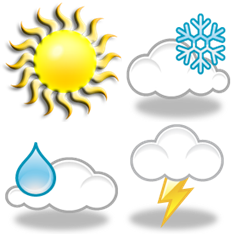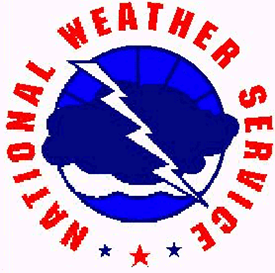The Value of Social Sciences in Weather Research
What are the Social Sciences?
Social science is best thought of as many disciplines–as social sciences–just as there are many different types of physical sciences, such as chemistry, biology, geology, and of course, meteorology. People who conduct social sciences research come from dozens of disciplines, such as cultural geography, anthropology, communication, sociology, political science and psychology–just to name a few. Within each of these disciplines, there are many sub-disciplines, just as within atmospheric sciences there are multiple areas to study.
What distinguishes the social sciences from the physical sciences are three main things: 1) the subject of their research; 2) their methods and theories; and 3) the questions they seek to answer. Most physical scientists are interested in finding causes for things in the physical world: What causes storms? What causes cancer? What causes electricity? They conduct experimental methods to test different hypotheses and come up with conclusions that lead to the understanding of laws of nature and particular processes.
Social scientists are likewise interested in processes, not of the natural world but the social world–human behavior, beliefs, perceptions, values and norms. They often focus on questions that look at how something occurs, but their ultimate aim is to understand why something occurs. Many social scientists are not experimental but explanatory or descriptive in their work. This isn't to say that social scientists don't conduct experiments; some do. But many more use qualitative methods (interviews, focus groups, participant observations), statistics (survey analysis, numerical evaluation) and content analysis of different media (television, papers and books, visual images) to help explain why people think, behave, and believe as they do.
Why is the National Weather Service engaging social scientists in the forecast and warning process?
Social scientists have been conducting hazard-related research since the 1950s. The NWS started engaging social scientists as early as the 1970s when they modernized forecasting technology, such as employing radars and satellites, and reorganizing the agency and forecaster roles. While there weren't as many social scientists collaborating with NWS forecasters then as there are today, NOAA used organizational psychologists to help them understand how forecasters used new technologies, such as AWIPS.
The main impetus for collaboration with social scientists today is the Weather Ready Nation Strategic Plan, released in 2011 after the devastating tornadoes in Missouri and Alabama. Given so many deaths (over 500–the greatest number since 1925) and all the improvements in warning technologies, many in the weather enterprise wondered what went wrong? In part, the NWS service assessment pointed to issues with the warning process that fell outside the scope of meteorological and atmospheric research:
- How do people get warnings?
- How do they understand them?
- What actions do they take?
- If they don't/can't take actions, why not?
- What are the barriers to access and action?
Since 2011, the number of social scientists working with the NWS has grown, as has the opportunity for funding of research projects jointly defined by meteorologists and social scientists. Some of the programs that have been in place to integrate social sciences and meteorological research include the following:
- WAS*IS
- SIPS Program
- NSF Hazard SEES Grants
- NOAA grants
Most recently, the VORTEX-Southeast research project was designed to explicitly integrate social sciences research into the understanding of problems related to tornado warnings, such as perceptions of false alarms, sheltering practices and availability, and lead time.
How are the social sciences useful to questions about the forecast and warning process?
There are almost too many ways to name here so I'll focus broadly on three categories: communication, including visual communication; issues of population vulnerability; and sheltering or evacuation practices. It's important to note, however, that forecasters have a valuable role to play in informing social sciences research by pointing out issues and concerns that they see or experience in their respective County Warning Area. Social scientists can't do their work well without the contributions from and support of the weather community.
Communication:Communication is a complex, two-way process whereby people make sense of their world. Researchers in this area look at how people understand risk, uncertainty, and visual graphics of these concepts. They may interview people in a particular location (or several locations) prone to hurricanes and then from these insights develop surge maps using principles of visual cartography and graphic design. They may conduct focus groups with people who survived a recent tornado to understand what actions they took and why to better understand barriers people encounter to sheltering in place. They may also look at how different stakeholder groups (community leaders, emergency managers, government officials) work together during times of extreme weather so that forecasters can best assist and provide information that meets stakeholder needs and timelines.
Vulnerability:Vulnerability is a way of thinking about the socioeconomic, demographic, and resource factors can make someone more susceptible to harm. Much of the hazard research literature, which overlaps with extreme weather research, looks at the different types of vulnerabilities that populations and groups can have and how that affects their ability to make life-saving decisions, such as evacuate or shelter. Often these researchers conduct research that immerses them in the particular context they research–such as living in a community and observing the way people live and think over several years. They can also do shorter term studies combining focus groups, interviews, and surveys. Once members of the weather community understand some of these vulnerabilities, they can make changes to the warning system by including, for example, lowered heat indexes in areas where there are high-rise buildings with elderly people in residence.
Forecaster Decision Making:People in the general public are not the only focus of social sciences research. As a key part of the warning process, operational meteorologists face unique challenges in making decisions about which information to trust, how to integrate new technologies into their procedures, and what how best to communicate their uncertainty / confidence to decision makers. Again, methods such as interviewing or focus groups can be valuable, as can participant observations where the researcher sits with the forecaster and watches him or her work. By watching the process, the social scientist can see those tacit aspects of the forecasters' work that are no longer apparent to them, such as the different tools used to assess the problem of the day.
In each of these research agendas, a few common insights have emerged:1) "The public" is a complex and heterogeneous group of people with different cultural, language, ability, religious, and socioeconomic backgrounds. They are not one monolithic group and so products will have to be flexible enough to accommodate local needs, just as modeling software must be bias corrected for different terrains and topographical features.
2) There is no one "appropriate action" that all people ought to (or can) take at all times. Given the numerous ways that hazards can occur and the complexities of people's lives, the best forecasters can do is make sure that people understand the type, timing, duration, and specific location of each hazard and what suggested actions they might take to stay safe. The concept of "zero deaths" from a weather-related event is unrealistic, even though this is a noble goal.
3) Communication is a dialogue that implies as much listening as talking–the same is true of education. In the warning process for a particular CWA, it's important to understand the unique needs and concerns of each population that is served. If you have a large Spanish-speaking population, for example, it would be wise to listen to that community and find out how to phrase warnings for that particular culture. A warning that isn't delivered and understood can't be acted on.
Jen Henderson is a Ph.D. candidate in Science and Technology Studies at Virginia Tech. Her dissertation work focuses on understanding forecaster challenges in the rapid onset, convective environment. Specifically, she's interested in how forecasters convey certainty and confidence, what technological issues they face, and how the role of the forecaster is changing in the National Weather Service.




